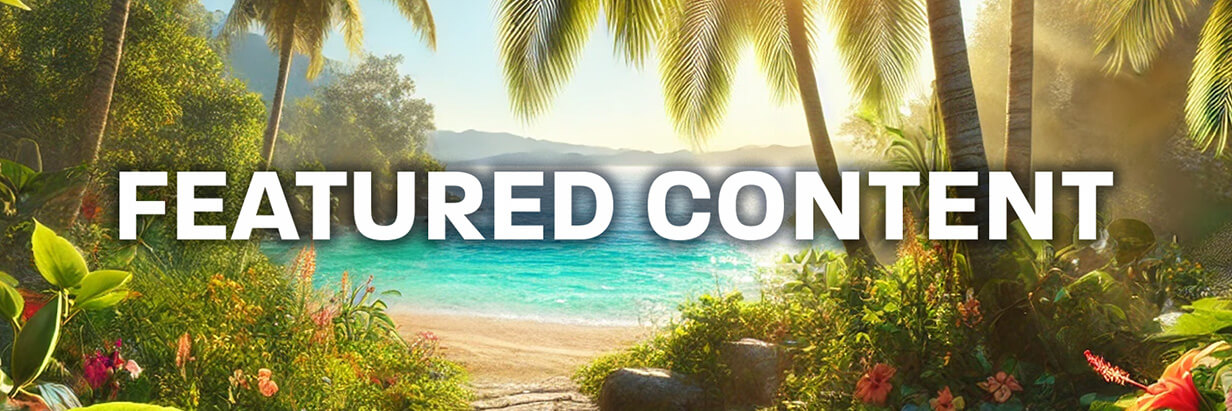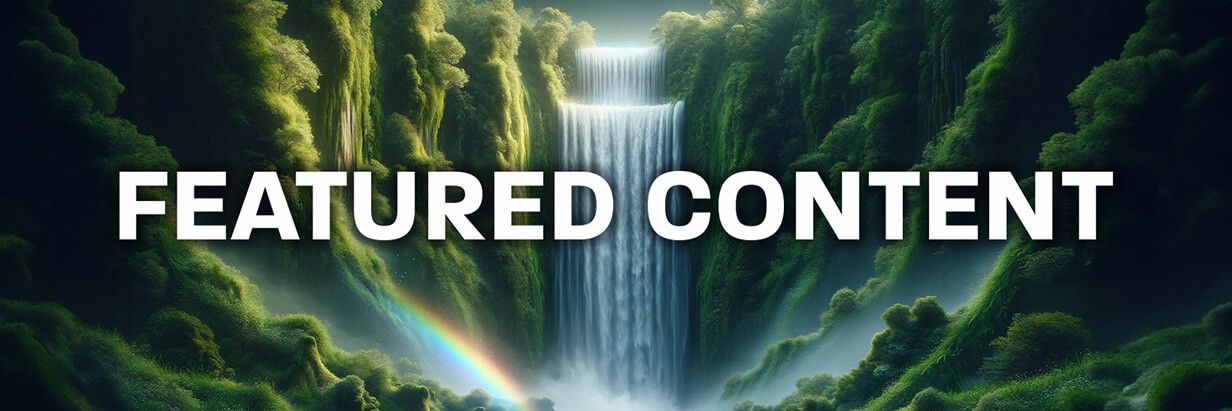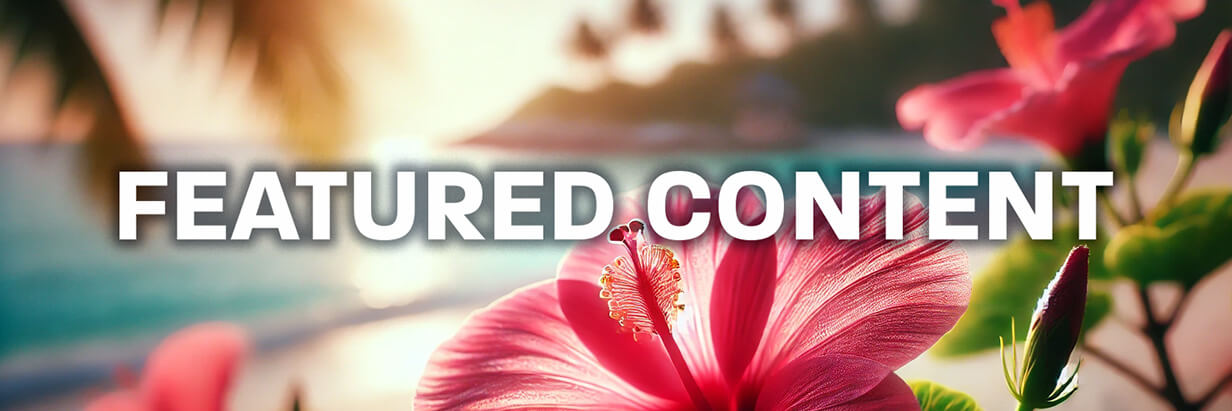Today's Guide to the Marketing Jungle from Social Media Examiner... | Presented by |  |
It's Festival of Sleep Day, Alluser! Have yourself a little nap… It's the rule!
In today's edition:
-
🤳 Today's Tip of the Day is for video
-
⚖️ Marketing for consumers decision-making behaviors
-
🎨 Creating exceptional art and designs with Midjourney
-
🚦 What works on Facebook in 2025
-
Snapchat Instant Streaks
-
Meta's AI persona profiles
-
TikTok Shop changes
-
🗞️ Additional industry news from Meta, Spotify, YouTube, and more

The angle you use to film can make a big difference to the atmosphere and appearance of your videos. Little details like eyelines and eye contact make a big difference, too.
Before you start filming, think carefully about the mood do you want to create. Is it formal or casual? Personal or professional?
5 Camera Angles to Improve Phone-Recorded Videos
-
To make something look big, dramatic, or scary, shoot from a low angle looking upwards.
-
To make something look small or cute, shoot from a high angle looking down.
-
Higher angles are also more flattering for selfie-style videos but don't overdo it!
-
If you're speaking directly to your viewers, make eye contact with the camera lens.
-
If you're speaking to or interviewing someone else, set up the camera so your eyeline is off to the side instead.
Today's tip was inspired by Steve Wright, a featured speaker at Social Media Marketing World.

So Much Has Changed, Alluser!
Last year brought enormous change for us marketers. And now, things like Artificial Intelligence are altering the way we do our jobs. Do you have a place where you can talk about these changes with fellow marketers?
The good news is we've built such a place—Social Media Marketing World—taking place March 30 - April 1.
"I went with an open mind not knowing what to expect other than other attendees saying it was the best experience ever. It was that and so much more," said Sunni O'Maley.
Help me through this season of change.

Building Better Launches: How to Create Campaigns that Serve All Decision-Makers
A few weeks ago, we gave you a 5-week content plan to naturally create demand and a sense of urgency for your next launch without relying on pushy tactics.
The basis of that proven content plan centers on anticipation marketing. Today, we explain how to do the groundwork to get started and give you the background to help convince others that this strategy is worth the time and effort.
Anticipation Marketing: A Proven Use Case
In an environment where trust in marketing can be low, and people are hesitant to spend, anticipation marketing provides a framework for building genuine connections and creating a natural desire for your offers.
Hollywood's approach to film promotion provides a master class in building anticipation. Studios don't simply announce a movie's release date—they begin creating excitement up to 120 days in advance through carefully orchestrated trailers and teasers.
This strategy works because it leverages two fundamental psychological principles.
First, humans naturally want what they can't immediately have. When something is just out of reach but attainable, it creates a stronger desire than if it were immediately available. Research shows that people who anticipate something experience levels of dopamine release similar to those when they actually receive it.
Second, movie marketing expertly creates open loops – unresolved narratives that keep people engaged and curious. Watching a movie trailer gives you enough information to become interested but not enough to feel satisfied. This experience creates a psychological need for closure that can only be fulfilled by seeing the movie.
When watching trailers, people often decide, "I want to see that movie." They make a mental commitment to purchase tickets long before the release date and become buyers before they spend any money.
This psychological positioning also works for launch marketing.
How Anticipation Marketing Addresses 2 Consumer Decision-Making Processes
Anticipation marketing is effective because it addresses a crucial aspect of consumer behavior that many marketing strategies overlook.
According to DISC personality assessments, approximately half of all people are slow decision-makers. Traditional marketing and sales tactics typically cater to fast decision-makers, those who make quick purchasing decisions.
However, slower decision-makers go through multiple steps of consideration, discussion with others, and potential mind changes. They often need more time and information before committing.
By creating a longer runway, you accommodate both quick and deliberate decision-makers. This inclusive strategy ensures you're not leaving money on the table by failing to engage with a significant portion of your potential market. The result is higher conversion rates and better-qualified leads who have had time to understand your offer fully and are ready to buy into it.
3 Ways to Prepare for Anticipation Marketing Campaigns
Before implementing anticipation marketing, you need to conduct thorough market research to understand your industry's buyer beliefs.
While this might seem like an unsexy starting point, it's essential for understanding your audience's actual needs, fears, and desires.
Pro Tip: When conducting customer research, ask open-ended questions that allow respondents to express themselves freely. This way, you capture your audience's exact language and phrasing when describing their challenges and desires. You can use this natural language to create marketing messages that resonate with your target audience.
Voice of Customer (VOC) Research
Voice of customer research should be done through two distinct types of interviews:
-
Conversations with current customers who have already purchased and experienced your solution
-
Discussions with prospects who haven't yet bought but are in your target market
These conversations can happen through various channels. While traditional Zoom calls work well, the people you're talking with may feel pressured to give you an immediate answer if they're looking at you on-screen in real time.
The asynchronous nature of tools like Voxe, a walkie-talkie app, often leads to more thoughtful, honest responses.
Social Media Research
Social media platforms offer valuable opportunities for gathering customer insights. To learn what your customers talk about and how they describe their experiences and situations, you can:
-
Engage with Instagram story responses
-
Have conversations through direct messages
-
Monitor comments on posts
-
Analyze frequently asked questions in your community
Leveraging AI for Research
Rather than letting AI pull random information from its learning, try giving it direction based on your initial findings from interviews and social media. Here are four ways AI can help you expand upon and verify the insights gained from those direct customer interactions.
-
Ask AI to generate dialogue that reveals the internal thought processes of your target audience
-
Request analysis of hidden objections in your market
-
Use AI to identify patterns in customer feedback
-
Have AI generate various scenarios of how customers might describe their challenges
Today's advice is provided with insights from Brenna McGowan, a featured guest on the Social Media Marketing Podcast.

How to Quickly Create Professional AI Art With Midjourney
Want to create AI art that doesn't look AI-generated? Want to learn the secret codes that transform MidJourney art into professional-looking designs?
Marshall Atkinson brings a unique perspective to using AI to create generated images, combining traditional artistic expertise with cutting-edge technology. A Florida State University graduate with extensive experience in photorealistic watercolors and a background as an art director, Atkinson uses Midjourney not as a replacement for artistic skill but as a powerful tool for enhancing creative workflows.
The time savings achieved through Midjourney can be substantial, particularly for complex creative projects.
A perfect example comes from Atkinson's experience with a complex t-shirt design for an amusement park's Halloween promotion. Had Atkinson designed the artwork using his traditional workflow, he estimates the project would have taken him 25-30 hours.
Using a Midjourney-enhanced workflow, he created a thumbnail sketch for the overall composition, generated 29 separate elements in Midjourney, imported them into Photoshop, and assembled them into the final composition in approximately 2.5 hours.
The Basic Midjourney Prompt Structure
Creating professional images with Midjourney requires understanding how to structure your prompts for optimal results.
Keep the total prompt length under 60 words; Midjourney typically ignores prompt content beyond this limit. You don't have to use capitalization or conjunctions, and Midjourney can interpret minor spelling errors, so correct spelling isn't critical. If you misspell chrysanthemums as chrysanthemums, you'll still get the flower you're looking for.
The system responds to carefully crafted text instructions, but you must communicate your vision effectively. The foundational structure of a Midjourney prompt follows a specific hierarchy of importance, with early words carrying more weight than later ones.
When structuring your prompt, separate the elements with commas for better organization. The Midjourney system doesn't require this structure, but Atkinson says it ensures his prompts are clear and include all the necessary design directions.
Atkinson recommends organizing prompts in this order:
-
Subject (What you want to create)
-
Action or State (What the subject is doing)
-
Lighting Conditions
-
Art Style
-
Technical Specifications
For example, rather than typing "Create an eagle logo," you might write:
Eagle, soaring, dramatic side lighting, graphic style, isolated flat white background
Pro Tip: The words you use in your prompts will yield different results. For example, using "tondo" instead of "round" or "cerulean" instead of "blue." Atkinson says a thesaurus can be your best ally when creating prompts that deliver what you want.
3 Advanced Midjourney Prompt Techniques
Use Curly Brackets to Test Variations
One of Midjourney's most powerful features is the ability to test multiple variations simultaneously using curly brackets. This prompt will generate separate results for each option, allowing for rapid experimentation with different subjects, color schemes, lighting conditions, art styles, camera angles, and textures.
The basic syntax is:
{option1, option2, option3}
If you want to test subject variants, use:
{eagle, mouse, kangaroo} majestic pose, sunset lighting To test color variants, use:
Mountain landscape, {red, blue, green} color scheme To test art style variants, use:
Portrait, {watercolor, oil painting, pencil sketch} Apply SREF Codes to Define Style
Style Reference (SREF) codes are powerful modifiers that dramatically alter an image's style.
The traditional style reference uses existing images as style guides, applies color and texture from reference images, and lets you maintain creative control over specific elements.
The basic syntax is:
--sref https://www.exampledomain.com/manga-art.jpg
Eagle, soaring, dramatic side lighting, graphic style, isolated flat white background--sref https://www.exampledomain.com/manga-art.jpg
You can use SREF Codes to change the overall style of an image from, say, watercolor to a silver point engraving with black and gold elements.
The basic syntax is:
--sref code ###
Eagle, soaring, dramatic side lighting, graphic style, isolated flat white background--sref code 507
Pro Tip: To discover new SREF codes on your own, add .--sref code random to the end of your prompt and Midjourney will return a new style. When you find one you like, save that code in a spreadsheet for reuse in other designs.
Include Modifiers to Fine-Tune Image Outputs
Modifying elements can be broken down into several categories.
Action modifiers to describe what your subject is doing. For example, a:
Environmental modifiers help you control the setting of your design. Here are a few to try:
-
stormy weather
-
urban scene
-
underwater scene
Camera position modifiers control the perspective and framing of your design. Tell Midjourney you want a:
-
drone shot looking down
-
low angle looking up
-
heroic angle
-
cinematic perspective
Lighting modifiers shape the mood and atmosphere of your image. Describe your preferred lighting in terms like these:
-
cinematic lighting
-
low key lighting
-
bright sunshine
-
nighttime
Today's advice provided with insights from Marshall Atkinson, a featured guest on the AI Explored podcast.

Will You Be There?
In a few months thousands of marketers will gather in San Diego for the biggest marketing event of the year—Social Media Marketing World. Will you be joining them?
If you want to make 2025 your standout year, consider attending. You'll learn from top experts and connect with marketers from all around the world.
"Social Media Marketing World has been my favorite and most effective event for networking. It's one of my favorite things to do as an adult," said Laura Pence Atencio.
I'm ready to discover what I've been missing.

Facebook Content Strategy 2025: What's Actually Working Right Now
Are you struggling to get your content seen on Facebook? Wondering how Meta's algorithm has changed?
Facebook has fundamentally shifted from a friend-based to an interest-based algorithm, similar to TikTok's model. Up to 50% of the content users now see in their feeds comes from what Facebook calls "unconnected sources" - accounts they don't follow.
This means the size of your following no longer determines your content's potential reach - someone with 500 followers has the same opportunity for viral content as someone with 5 million followers.
This shift has proven remarkably successful, with Facebook seeing an 8% increase in time spent on the platform. Mari Smith shares her experiences with what's working with the discovery engine right now.
Short-Form Video (Reels)
Videos up to 90 seconds that share educational and inspirational content typically perform better than promotional material.
The first three seconds are crucial for capturing attention, so creators must develop a compelling hook that immediately grabs viewers' interest. Then, you should focus on a single point rather than trying to pack multiple messages into one video. Avoid being too product-focused in your videos. Instead, showcase staff members and customers to humanize your brand.
Image Posts
Single-image posts remain effective when properly optimized.
Smith recommends using a 4:5 aspect ratio (slightly taller than square) for optimal feed presentation. She also advises placing links in the first comment rather than the post to improve reach, though she notes that this feature isn't yet available in Meta Business Suite for scheduling.
To stand out in increasingly AI-dominated feeds, Smith suggests using real images rather than AI-generated visuals.
Color Background Posts
In Smith's experience with her students, text-based posts with colorful backgrounds have performed remarkably well. The bright colors help them stand out in the feed, while the text format often receives preferential treatment from the algorithm.
She recommends incorporating these posts once or twice weekly, framing the content as questions, or creating highly shareable content that encourages immediate engagement.
The key to success with these posts lies in creating content that hooks people's minds and stops them in their tracks.
Text-Only Posts
Smith has observed interesting patterns with text-only posts on the platform. Long-form text tends to perform better on pages than on personal profiles, while very short text can also perform exceptionally well.
Stories
While Stories don't benefit from the discovery engine, they maintain a prominent position at the top of the feed. Smith identifies them as "one of the most underutilized top-of-mind, top of feed, visibility, awareness, reach tools." They are an excellent way to test new content ideas and maintain consistent visibility with existing followers.
Live Video
Live video is experiencing a resurgence, particularly for specific types of content. Smith notes that businesses focusing on arts and crafts demonstrations, cooking shows, DIY content, screen sharing, and educational content are seeing strong results with live streaming.
She predicts an uptick in live shopping features, inspired by the success of platforms like Whatnot, suggesting that businesses should prepare to capitalize on this emerging trend.
Understanding Facebook's New Analytics
Facebook has replaced impressions with a new unified "views" metric for all content types. The most significant change is how views are counted - content now registers a view after just one millisecond of exposure, even if users only see a thumbnail in their feed. This represents a dramatic shift from previous metrics, where video views required three seconds of watch time.
While this change might show inflated numbers compared to previous metrics, looking deeper into your analytics will yield valuable insights.
Smith advises monitoring retention graphs for engagement data and paying close attention to non-follower metrics in Meta Business Suite.
Perhaps most importantly, she identifies private message shares as "a number one indicator of potential greater reach," suggesting that content shared through direct messages often receives preferential treatment from the algorithm.
Posting Strategy and Performance
Regarding post-performance, Smith strongly advises against deleting underperforming posts, noting that content can gain traction later due to the discovery engine. She also suggests that posting times have become less critical for global audiences, though local businesses might still benefit from posting during their target time zone's peak hours.
Today's advice is provided with insights from Mari Smith, a featured guest on the Social Media Marketing Podcast and speaker at Social Media Marketing World 2025.

Facebook Business Page Phishing Campaign: Kaspersky's security experts have discovered a new phishing scam that targets businesses with Facebook pages. The scam begins with emails falsely claiming to be from Meta for Business, telling recipients their page contains prohibited content and requesting explanations to unblock their account and page. Source: Kaspersky
Snapchat Instant Streaks: Snapchat+ subscribers can activate Instant Streaks to begin a streak immediately after exchanging snaps with a friend rather than waiting three days. This feature only works for new streaks or reset streaks, not existing ones. If a streak is eligible for restoration, users must wait until it's no longer restorable before starting an Instant Streak. Users can manage this feature through their Snapchat+ membership settings page by toggling the Instant Streaks option. Source: Snapchat
YouTube Tests Play Something Experience for Android: When the floating action button (FAB) is activated, it launches a video in the Shorts player format, though it can play both Shorts and regular videos using this vertical viewing interface. The interface includes large interaction buttons on the right side for likes, dislikes, comments, and sharing, along with a timeline scrubber at the bottom of the screen. The Play Something button automatically hides when the mini player is active. This feature has been in testing since last year, with the latest iteration appearing in Android version 19.50. Source: 9to5Google
Meta Announces AI-Powered Persona Profiles: In a move that could redefine social media interaction, Meta Platforms is set to introduce AI-powered profiles across its platforms, including Facebook and Instagram. These AI personas, equipped with unique bios and profile pictures, will be capable of generating content, interacting with users, and even engaging in conversations. Source: Social Media Today
Meta Announces AI-Powered Persona Profiles: In a move that could redefine social media interaction, Meta Platforms is set to introduce AI-powered profiles across its platforms, including Facebook and Instagram. These AI personas, equipped with unique bios and profile pictures, will be capable of generating content, interacting with users, and even engaging in conversations. Source:
Social Media Today Leadership Changes at Meta: Nick Clegg, the president of Meta's Global Affairs team, is stepping down from his position at the company. Joel Kaplan will replace him. Source: Nick Clegg via X
Spotify Partner Program Launch: The new monetization system is available to creators in the United States, United Kingdom, Canada, and Australia. The program provides eligible podcast hosts with multiple revenue streams, including audience-driven payouts from Spotify Premium video engagement and ad monetization options across Spotify Free and other podcast platforms. While creators' built-in sponsorships will remain in episodes, Premium users will not encounter traditional dynamic ads during video content, ensuring a smooth viewing experience across all devices. Source: Spotify
TikTok Updates Shop Returns Policy: Beginning January 10th, 2025, TikTok Shop is implementing a significant change to its return shipping policy. Under the new policy, sellers who manage their shipping through the "Ship by Seller" method will be required to cover the return shipping costs when customers request a refund. Shop owners who use TikTok's in-house shipping service ("Ship by TikTok") will continue operating under their existing terms without any modifications to their return shipping arrangements. Source: Social Media Examiner Editorial Team
What Did You Think of Today's Newsletter?
Did You Know?
Kermit the Frog's full name is Kermit Maury Frog.

Michael Stelzner, Founder and CEO
P.S. Add
michael@socialmediaexaminer.com into your contacts list. Use Gmail?
Go here to add us as a contact.
We publish updates with links for our new posts and content from partners. Your information: Email:
tukangpostoemel@gmail.com Opted in on: 2021-09-06 17:20:47 UTC.























![🔴 [LANGSUNG] AWANI Live 24/7 🔴 🔴 [LANGSUNG] AWANI Live 24/7 🔴](https://korhvo.stripocdn.email/content/guids/videoImgGuid/images/image16381563704857108.png)

.png?ext=.png)




